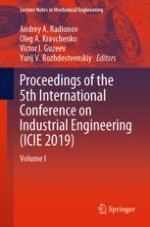This book highlights recent findings in industrial, manufacturing and mechanical engineering, and provides an overview of the state of the art in these fields, mainly in Russia and Eastern Europe. A broad range of topics and issues in modern engineering are discussed, including the dynamics of machines and working processes, friction, wear and lubrication in machines, surface transport and technological machines, manufacturing engineering of industrial facilities, materials engineering, metallurgy, control systems and their industrial applications, industrial mechatronics, automation and robotics. The book gathers selected papers presented at the 5th International Conference on Industrial Engineering (ICIE), held in Sochi, Russia in March 2019. The authors are experts in various fields of engineering, and all papers have been carefully reviewed. Given its scope, the book will be of interest to a wide readership, including mechanical and production engineers, lecturers in engineering disciplines, and engineering graduates.
